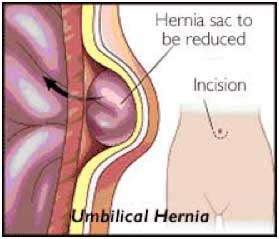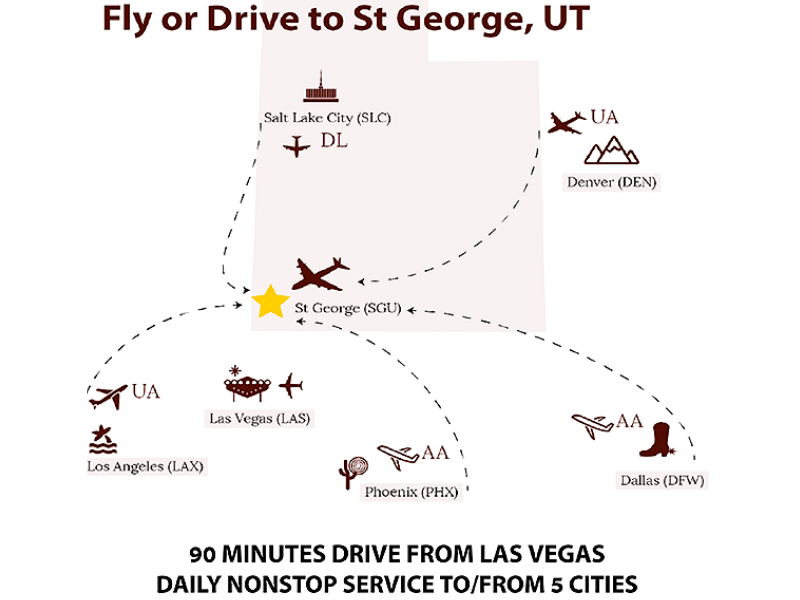Umbilical Hernia (Open)
Umbilical Hernia
An Umbilical Hernia is a result of weakness in the muscles in or around your belly button. It causes the belly button to pop outwards and can happen at any age.
- Adults: Umbilical Hernias are most common in women during and after pregnancy, and in people who are overweight. An Umbilical Hernia is not dangerous in itself, but there is a risk that it will get trapped (incarcerated). This can cut off the blood supply to the contents of the hernia, causing life-threatening conditions such as gangrene or peritonitis (if this happens, the hernia is said to be strangulated). If it’s not treated, your hernia is likely to get larger and become more uncomfortable. In most cases, an Umbilical Hernia repair operation is recommended.
- Children: Umbilical Hernias are fairly common. A hernia at birth will push the belly button out. It shows more when a baby cries because the pressure from crying makes the hernia bulge out more. In infants, the problem is not usually treated with surgery. Most of the time, the Umbilical Hernia shrinks and closes on its own by the time a child are 3 or 4 years old. Umbilical Hernia repair may be needed in children for these reasons:
- The Umbilical Hernia is painful and stuck in the bulging position.
- Blood supply is affected.
- The Umbilical Hernia has not closed by age 5 or 6.
- The defect is very large or unacceptable to parents because of how it makes their child look. Even in these cases, the doctor may suggest waiting until your child is 5 or 6 to see if the hernia closes on its own.

FAQS
Frequently asked questions about surgical procedures
Can I use my insurance and get these prices?
Payment is due 14 calendar days prior to your surgery date. If, after the cutoff, your account is not settled, your case must be postponed.
How quickly can I have surgery?
How will I meet my surgeon?
If I had a car or work accident, would you work with my employer or attorney for payment?
What if I get sick right before my surgery?
You could develop a respiratory infection, a urinary tract infection, COVID, or some other condition that may necessitate postponement. There is no penalty when this happens.
What’s Included:
- Facility fee
- Graft and hardware costs (if needed)
- Surgeon and assistant surgeon fees
- Anesthesiologist
- Time in the recovery unit (at no additional charge)
- Initial consultation visit
- One post-operative visit
*Please note: If you choose not to proceed with surgery after the initial consultation, or if you delay your procedure for more than 6 weeks, you will need to update your consultation at a cost of $375.
What’s not included:
- Lab testing before and after the surgery, as needed
- Electrocardiogram (EKG), depending on age. If you had one elsewhere in the past 6 months and it read “normal”, we can forego this expense.
- Imaging costs. X-rays and MRIs can be obtained anywhere.
- Physical therapy services
- Medications you’ll need (oral or IV antibiotic infusions if an infection arises)
- Wound care
- Bracing supplies
- Additional doctor visits (a pre-operative visit with the surgeon, in person, and any required post-op follow-ups after the suture removal to monitor your progress
- Additional surgical intervention if a complication arises
- Additional imaging or hospital care if a blood clot develops
Preparation for an Umbilical Hernia Surgery
Umbilical Hernia surgery is usually performed under general anesthesia. You will be asleep and will not experience any pain. Some small hernias can be repaired with a spinal block instead. In this case, you will be awake, but will be entirely numb at the surgery site. Preoperative preparation includes:
- Blood work and a medical evaluation
- Several days before the surgery, you will need to stop taking nonsteroid anti-inflammatory medications (NSAIDs) like aspirin and ibuprofen. This will reduce your risk of bleeding during the procedure.
- After midnight the night before the operation, you should not eat or drink anything except medications that your surgeon has told you to take with a sip of water the morning of the surgery.
Procedure for Umbilical Hernia Surgery
Umbilical Hernia repair can be performed in two different ways. During a conventional open surgery, the surgeon makes an incision below your belly button to access the hernia. Alternatively, a less invasive procedure called laparoscopic surgery can be performed, in which the surgeon makes several smaller incisions around the hernia site. A thin, flexible tube with a light on the end is inserted into one of the holes. This instrument is called a laparoscope, and it allows your doctor to see the inside of your abdominal cavity on a video screen. Your surgeon inserts surgical instruments into the other keyhole-size holes in your abdomen to repair the hernia. Regardless of the surgery type, the actual repair process remains the same. The surgeon gently pushes the bulging intestine and abdominal lining back through the hole in the abdominal wall. Stitches close the hole in the wall. Sometimes, a synthetic mesh material is used in adults to make the area stronger.
What to expect after your surgery
Recovering from an Umbilical Hernia Surgery Repair
Following the operation, you will be transferred to the recovery room where you will be monitored for 1-2 hours until you are fully awake. Once you are awake and able to walk, you will be sent home. With any hernia operation, you can expect some soreness during the first 24 to 72 hours. You are encouraged to be up and about the day after surgery. You will probably get back to your normal activities within a short amount of time. These activities include showering, driving, walking up stairs, light lifting, and working.
Umbilical Hernia Risk Factors
- The possible complications of any operation include:
- An unexpected reaction to the anesthetic
- Excessive bleeding
- Infection
- Developing a blood clot, usually in a vein in the leg (deep vein thrombosis, DVT).
- Damage to other organs in the abdomen – this is more likely if the operation is done using keyhole surgery, and further surgery may be needed to repair any damage
- Pain or numbness in the lower abdomen – this may last several months
- Re-occurrence – it’s possible the Umbilical Hernia may recur.
Can I Travel to St George for Surgery?
Yes, and we’ll help you make all your arrangements.
- We have arrangements to try to obtain free flights through a non-profit volunteer pilot organization. We can do this with 10 days’ advance notice in most cases.
- We have discount codes for the Holiday Inn in town. This hotel is 1.5 miles from the surgery center and 2 miles from our clinic.
- We’ll arrange to send your after-surgery medications to your hometown pharmacy for pickup before you leave.
What if I would rather drive to St George?
No problem, we can help with those plans as well. When you have surgery with us, we’ll need to make sure you’re safe and comfortable after surgery. We’ll arrange cold compression therapy that requires an AC/DC adaptor/transformer and frequent stops to stretch and refill the ice reservoir on the road.
We’ll ask about the vehicle you’ll travel in to ensure you have a way to elevate and stretch out in the vehicle on the road while someone else does the driving.

How are follow-up and initial consultations handled?
In-person and telehealth consultations are possible with the surgeon to whom your case is assigned. The initial visit is included in the surgical package and is valued at $375.
We can also obtain the flights from the volunteer pilot nonprofit if you’d like to come for initial and follow-up visits in person. One follow-up visit is included in the surgical package at a value of $175. Any additional visits are charged at the time of service to your credit or debit card.
Transparent Pricing Guide
Find out the exact cost of your procedure in seconds, with no hidden fees, no surprises, and complete transparency every step of the way.
